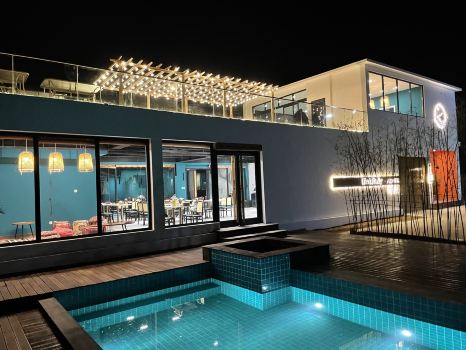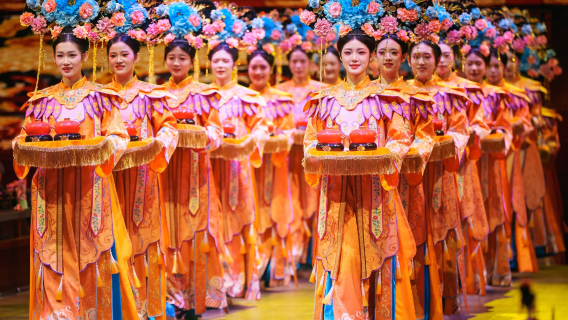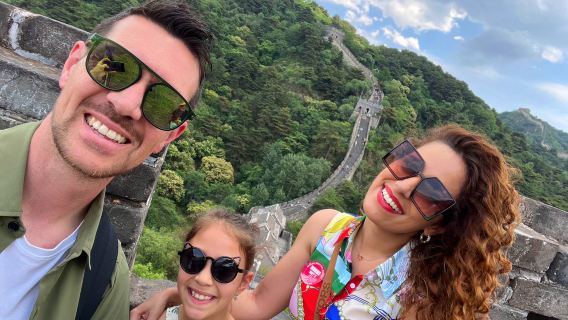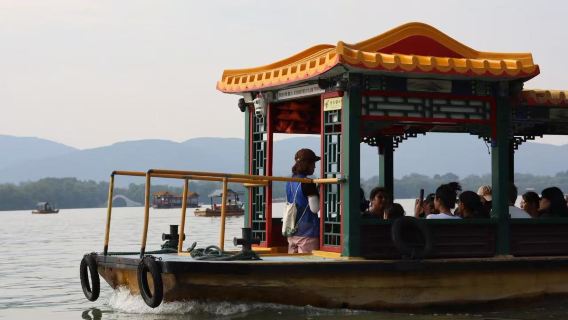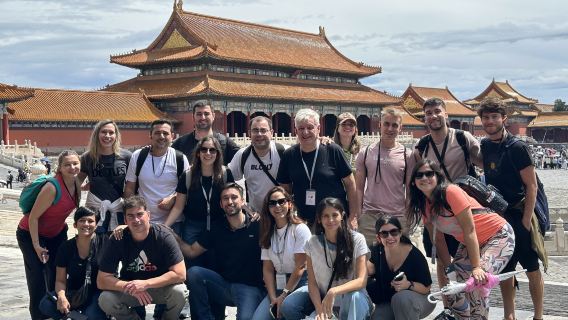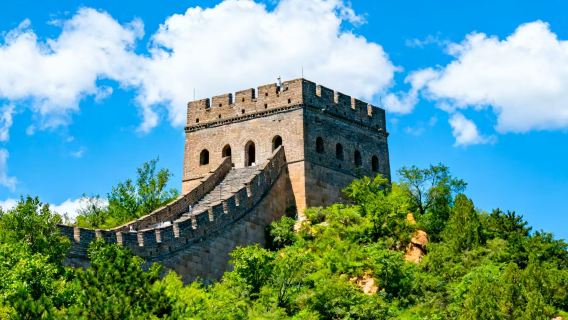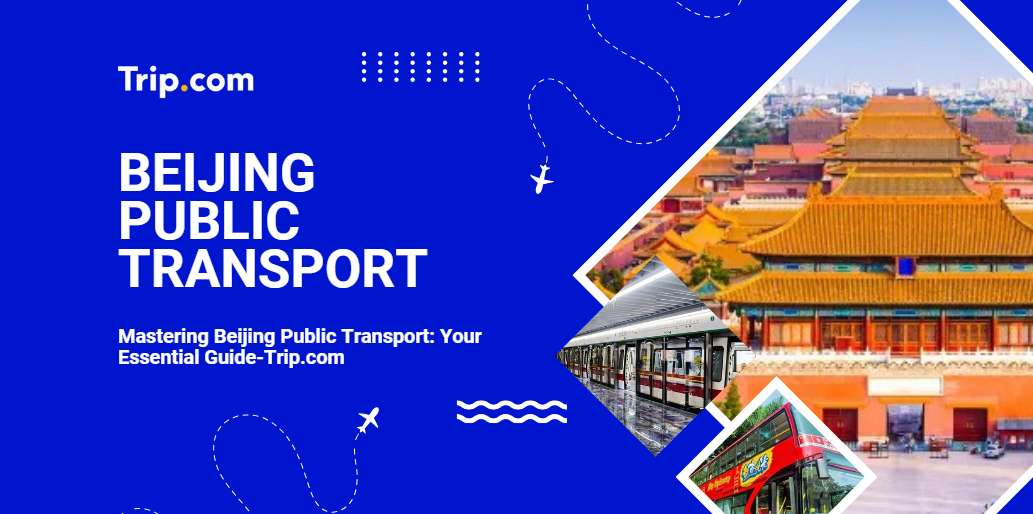
As an Indonesian visiting Beijing, I was immediately impressed by the city's efficient and well-organized transportation system. The subway network is extensive and reliable, making it easy to travel across the city. Buses are also easy to use, and cycling around the city offers a unique way to see Beijing's sights at your own pace.
While Beijing moves at a steady and bustling pace compared to Jakarta, there's a distinct charm in how everything functions so efficiently. If you're used to Jakarta's lively atmosphere, you'll feel comfortable here, just with a touch more tradition and historical ambiance.
In this guide, I'll walk you through Beijing's transport options—covering the subway, buses, taxis, ride-hailing services, and the best routes for walking. Here's everything you need to know about the secrets of Beijing public transport with our essential guide.
Recommended eSIM Options for Traveling to China!
3 day - 3GB/day
- Data3GB/day
- Validity3 day
- Pricefrom Rp 64.556
5 day - 20GB
- Data20GB
- Validity5 day
- Pricefrom Rp 136.035
7 day - 20GB
- Data20GB
- Validity7 day
- Pricefrom Rp 147.439
1. 🚇 Beijing Subway-Beijing Public Transport
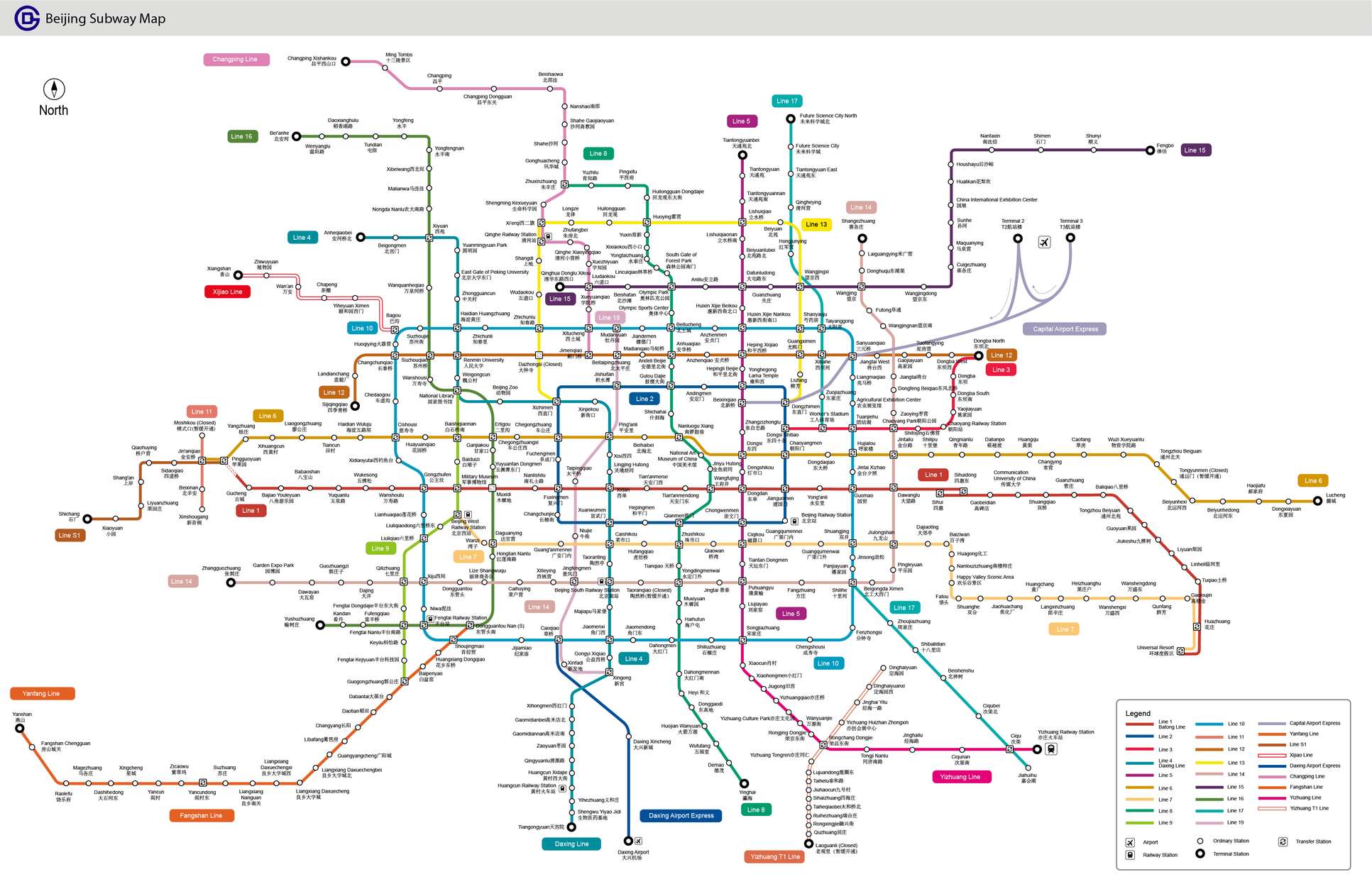
Source: Travel China Guide
The Beijing Subway (北京地铁) is essential for visitors, offering an extensive network that covers most major attractions and shopping areas. With over 20 lines and more than 400 stations, it efficiently connects different parts of the city, including both Beijing Capital International Airport and Beijing Daxing International Airport. The lines are identified by numbers and colors, making navigation straightforward.
📍 Key Tourist Stops
- Tiananmen Square (Line 1): 🏛️ Central location for historic sites like the Forbidden City.
- Wangfujing (Line 1): 🛍️ Known for shopping and local street food.
- Olympic Park (Line 8): 🏟️ Visit the Bird’s Nest and Water Cube.
- 798 Art District (Line 14): 🎨 A hub for contemporary art and culture.
- Summer Palace (Line 4): 🌳 Explore beautiful gardens and historic architecture.
💳 Tickets, Cards, and How to Pay
The subway is affordable, with fares ranging from ¥3–9 per ride. Most locals use the Beijing Transportation Smart Card, similar to Hong Kong's Octopus Card, for easy tap-in and tap-out. Cards can be purchased at metro stations. For tech-savvy travelers, Alipay or WeChat Pay linked to a Chinese bank account offers a convenient QR code entry option.
🕒 Operating Hours & Frequency
- First Trains: Start around 5:00 AM
- Last Trains: Typically by 11:00 PM, though this varies by line
- Frequency: Every 2–5 minutes, even during off-peak hours
✅ Pros & Ideal Users
Ideal for tourists and commuters, the Beijing Subway is clean, air-conditioned, and efficient. It offers a comfortable travel experience similar to other major cities like Tokyo.
⚠️ Tips or Watch-Outs
- Line 1 can be crowded, especially during peak hours.
- While signage is available in English, some stations are large and may require extra time to navigate.
- If you're traveling with kids, try to avoid peak rush hour times.
2. 🚌 Beijing Buses for Tourists
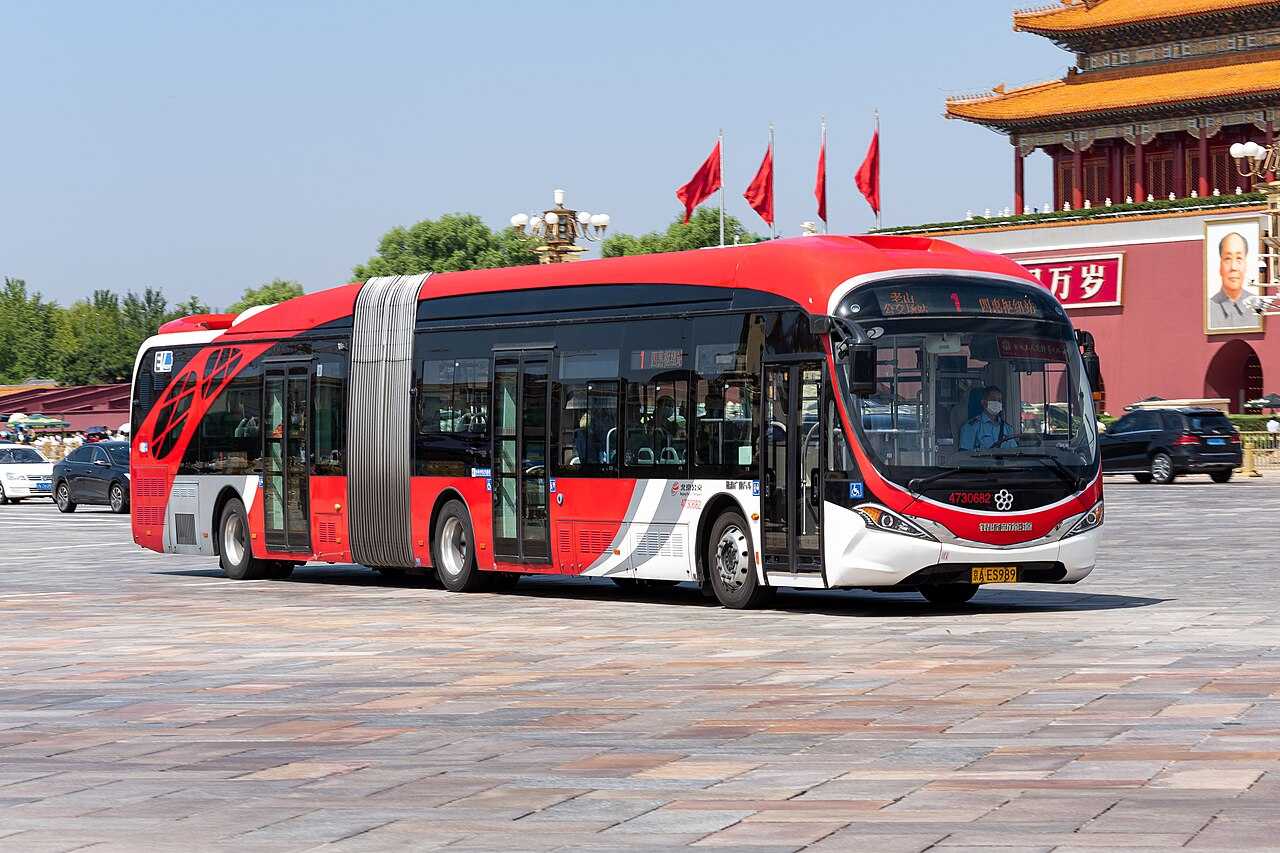
Source: Wikipedia
Beijing's public bus system covers many areas of the city, including suburban regions and tourist spots. Buses are a popular choice for locals and tourists who want to explore the city at a leisurely pace.
📍 When & Where to Use Buses
Buses can be a better option than the metro for scenic routes or access to parks and areas not served by the metro. For example, Bus Line 1 offers views of Chang'an Avenue, while Bus Line 2 is great for reaching shopping areas and restaurants around Wangfujing and Qianmen.
💳 How to Pay & Board
You can pay with a Beijing public transport card, cash, or mobile apps like Alipay and WeChat Pay. Make sure to have exact change if paying with cash, as no change is given. Board the bus through the front door and tap your card when entering and exiting.
🕒 Operating Hours & Frequency
- Operating Hours: Typically from 5:00 AM to 11:00 PM
- Frequency: Every 5–15 minutes during the day, but less frequent at night
✈️ Airport Shuttle / Bus
Beijing airport shuttles, like Airport Bus Line 3, connect Beijing Capital International Airport with downtown at a cost of around ¥25–30 (approximately Rp 50,000–60,000). These shuttles are convenient and easy to find at the airport, ideal for late-night arrivals or if you have large luggage.
✅ Advantages & Who It's Suitable For
Buses are a great choice for budget-conscious tourists or those wanting a relaxed city tour. Certain routes offer beautiful views and a good introduction to the city's atmosphere. Compared to buses in Jakarta, Beijing buses provide similar comfort and affordability.
⚠️ Attention
Note that some signs can be confusing, and bus schedule apps might not always be accurate. However, most signs and announcements are available in English.
3. 🚕 Taxis & Ride-Hailing in Beijing
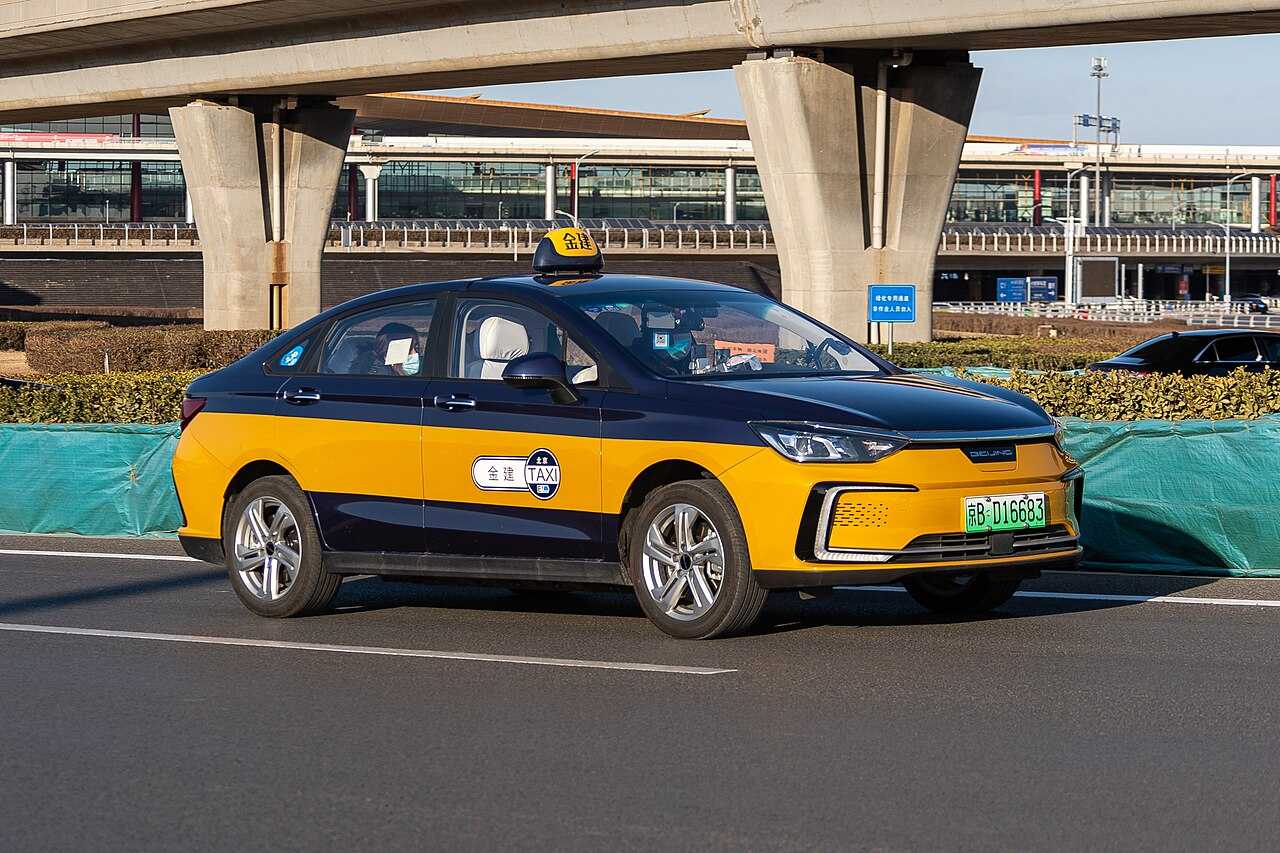
Source: Wikipedia
Beijing has a well-organized system of taxis and ride-hailing services, making it easy to travel around the city. Taxis are plentiful and usually dependable, with drivers who are professional and polite. Ride-hailing apps like Didi Chuxing are popular because they are convenient and easy to use. Both taxis and ride-hailing services are regulated, but it's wise to be cautious of scams, such as drivers saying the meter is broken.
📱 Popular Ride-Hailing Apps:
🚗 Didi Chuxing: The leading ride-hailing app in China, offering services from regular cars to luxury vehicles. It includes upfront pricing, in-app payments, and an English language option for easy use. Available on the App Store and Google Play.
🚙 Meituan and Shouqi: Other options gaining popularity, though they might not have English interfaces.
💸 Fare Estimates & How to Pay:
Taxis in Beijing charge by the meter, with fares starting at about 13 RMB for the first 3 kilometers. Ride-hailing apps provide upfront pricing, ranging from 20 RMB to 100 RMB depending on distance and demand. Be mindful of night surcharges and tolls.
Payments can be made in cash or through mobile apps like Alipay and WeChat Pay.
🛬 Airport Pickup Info:
At Beijing Capital International Airport, official taxi ranks are clearly marked and easy to find. Ride-hailing pickup zones are available, and booking ahead using apps like Didi can help avoid long waits. Note that airport pickups may have extra charges.
✅ Best for These Travelers:
Taxis and ride-hailing services are great for families with kids, seniors, and travelers with lots of luggage. They are especially useful for late-night arrivals or when staying in areas not well-served by public transport.
⚠️ Things to Watch Out For:
- Be aware of scams like drivers claiming the meter is broken or taking longer routes.
- During peak hours or bad weather, ride-hailing apps might have high demand, leading to longer wait times.
- Stick to official taxi ranks and app-based services to avoid unofficial drivers.
Recommended Hotels in Beijing
4. 🚗 Car Rentals & Driving in Beijing
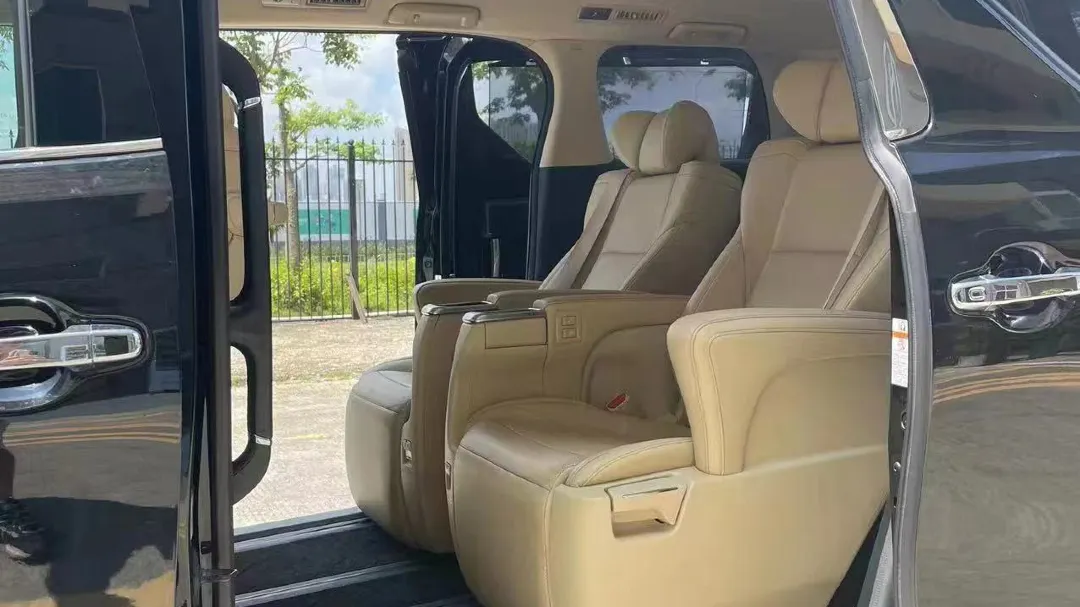
Driving in Beijing can be practical but also challenging. It's a good option if you're planning trips to nearby cities, traveling with kids, or staying in the suburbs where public transport is less available. However, in the busy city center, traffic can be stressful, and public transport might be easier.
📍 Where to Rent a Car:
You can rent a car at major locations like Beijing Capital International Airport or at various city outlets. Online booking through platforms like Trip.com is reliable and convenient.
📄 Requirements for Tourists:
Tourists need an International Driving Permit (IDP) along with their home country driving license. The minimum age to rent a car is usually 21, but some companies may require drivers to be 25. Bring your passport, IDP, and a credit card for deposits. Local insurance is typically required and can be arranged at the rental counter.
💸 Cost Overview:
Daily rental rates range from around 400 RMB to 1,000 RMB, depending on the car type. A deposit is often required, ranging from 1,500 RMB to 3,000 RMB. Fuel policies are usually full-to-full. Be aware of extra costs like tolls, parking fees, and possible congestion charges in busy areas.
🛣️ Driving Conditions & Culture:
Traffic in Beijing can be heavy, especially during peak hours. Local driving habits might seem aggressive, and road signs are mainly in Chinese, though major routes have English translations. Beijing drives on the right-hand side, and GPS systems are generally reliable but make sure they are set to English.
⚠️ What to Watch Out For:
- Be careful of narrow alleys and steep roads, especially in older districts.
- Parking can be difficult in the city center, with limited spaces and restricted zones.
- It's a good idea to plan your parking in advance.
✅ Ideal Travelers:
Renting a car is ideal for families, business travelers, or couples planning day trips to the countryside. It's less suited for those staying mainly in the city center due to traffic and parking challenges.
5. 🚴♂️ Bike Sharing in Beijing
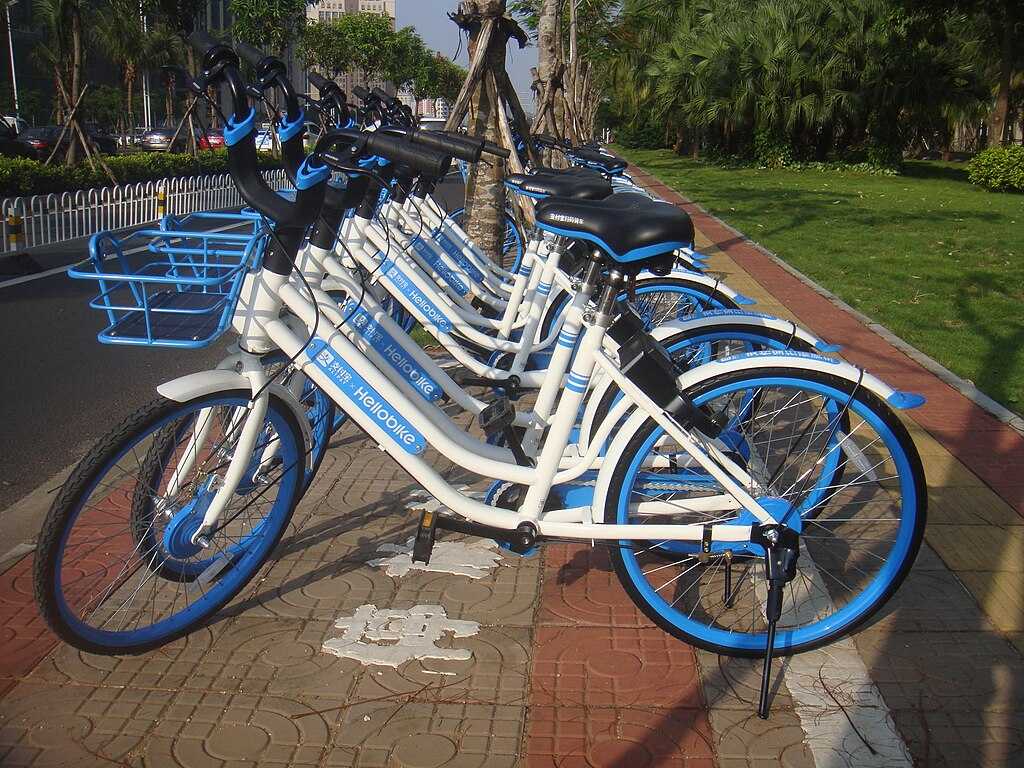
Source: Wikipedia
In Beijing, bike sharing is a popular way to get around the city. Local providers offer shared bikes that can be accessed through apps like Meituan and HelloBike. These services provide a convenient and eco-friendly way to explore Beijing.
📍 Where to Find Them:
You can find shared bikes near subway stations, outside shopping centers, and at busy street corners. These services are usually dockless, so you can pick up and drop off bikes anywhere within designated areas.
📲 How to Use:
To use these services, download the app (e.g., Meituan or HelloBike). Tourists can sign up using an ID, credit card, and phone number. Unlock a bike by scanning the QR code on it. Pricing is often based on time or distance, with rates starting from a few RMB per ride.
🛡️ Safety Tips:
Helmets are not usually provided, so it's a good idea to bring your own if possible. For first-timers, make sure to ride steadily, sit comfortably, and wear suitable clothing. Be aware of local traffic, which can be busy, and always stay alert.
✅ Ideal For:
Bike sharing is great for short trips, exploring narrow streets, and avoiding traffic jams. It's perfect for solo travelers, commuters, or anyone visiting nearby attractions.
⚠️ What to Watch Out For:
Be careful of higher prices during peak hours. Insurance coverage might be limited, so check the app's terms. Avoid using bikes during rain, on bad road conditions, or when carrying heavy bags.
flight tickets from Jakarta to China
- Satu Arah
- Pulang-Pergi
- direct cheapest
 CGK01:457h 10mLangsungPEK09:55Jakarta - Beijing|Kam, 1 Jan|Air China (CA)€226€27317% OFF17% OFF€273€226
CGK01:457h 10mLangsungPEK09:55Jakarta - Beijing|Kam, 1 Jan|Air China (CA)€226€27317% OFF17% OFF€273€226  CGK01:457h 10mLangsungPEK09:55Jakarta - Beijing|Sab, 3 Jan|Air China (CA)€227€27317% OFF17% OFF€273€227
CGK01:457h 10mLangsungPEK09:55Jakarta - Beijing|Sab, 3 Jan|Air China (CA)€227€27317% OFF17% OFF€273€227 CGK05:1019h 5m1 stopPKX01:15Jakarta - Beijing|Rab, 26 Nov|Airasia Indonesia€107€27361% OFF61% OFF€273€107
CGK05:1019h 5m1 stopPKX01:15Jakarta - Beijing|Rab, 26 Nov|Airasia Indonesia€107€27361% OFF61% OFF€273€107 JKT1:00 PM3h 5mLangsungBJS2:00 PMJakarta - Beijing|Fri, Nov 28|Air China (CA)Temukan Penerbangan LainnyaTemukan Penerbangan Lainnya
JKT1:00 PM3h 5mLangsungBJS2:00 PMJakarta - Beijing|Fri, Nov 28|Air China (CA)Temukan Penerbangan LainnyaTemukan Penerbangan Lainnya
Harga yang dicoret dihitung berdasarkan harga rata-rata rute terkait di Trip.com.
6. 🚤 Exploring Beijing by Water: Boats & Ferries
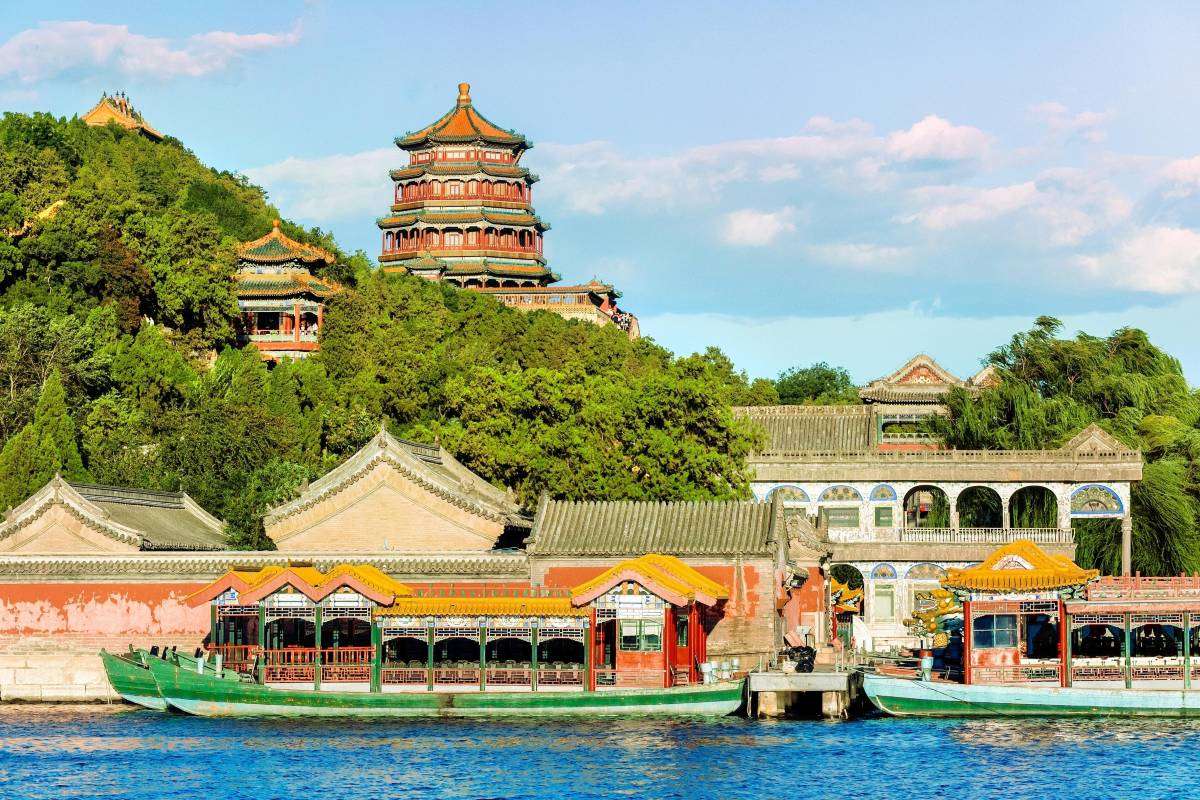
Beijing's waterways offer a peaceful and scenic way to explore parts of the city, combining leisure with unique views. While not as extensive as Shanghai's, options like the Summer Palace lake boats and the Beijing-Hangzhou Grand Canal cruises provide memorable experiences.
🗺️ Where It Goes
These water routes take you through beautiful areas, such as the Summer Palace, where boats glide across Kunming Lake. The Grand Canal cruises offer views of historic sites and connect to various cultural spots. Many starting points are near metro stations, making it easy to switch between land and water.
🎟️ Tickets & How to Ride
Boat rides at the Summer Palace are affordable, with tickets typically costing a small fee. Tickets can be bought on-site. For Grand Canal cruises, prices vary and online booking is often available. English support may be limited, so it's good to plan ahead.
⏰ Timings & Frequency
Boats at the Summer Palace usually operate during park hours, with frequent departures. Grand Canal cruises have set schedules, often with more options in the warmer months. Some offer guided tours, perfect for learning about the area's history.
👨👩👧👦❤️ Who It’s Best For
Water transport is great for sightseeing and offers a relaxing break from city crowds. It's family-friendly, with plenty of space for children to enjoy the views. Couples might enjoy the romantic atmosphere of a sunset cruise.
⚠️ Watch-Outs or Considerations
Be aware of boat schedules, as they can change with the seasons. Boarding might be tricky for those with mobility issues, so take care. Prepare for weather changes; a hat and sunscreen are useful on sunny days.
🌟 Local Flavour
Experience local culture as you pass by traditional Chinese architecture and serene gardens. You might see locals practicing tai chi by the water or spot a traditional dragon boat, adding authenticity to your journey.
7. 🚶 Walking & Exploring on Foot in Beijing
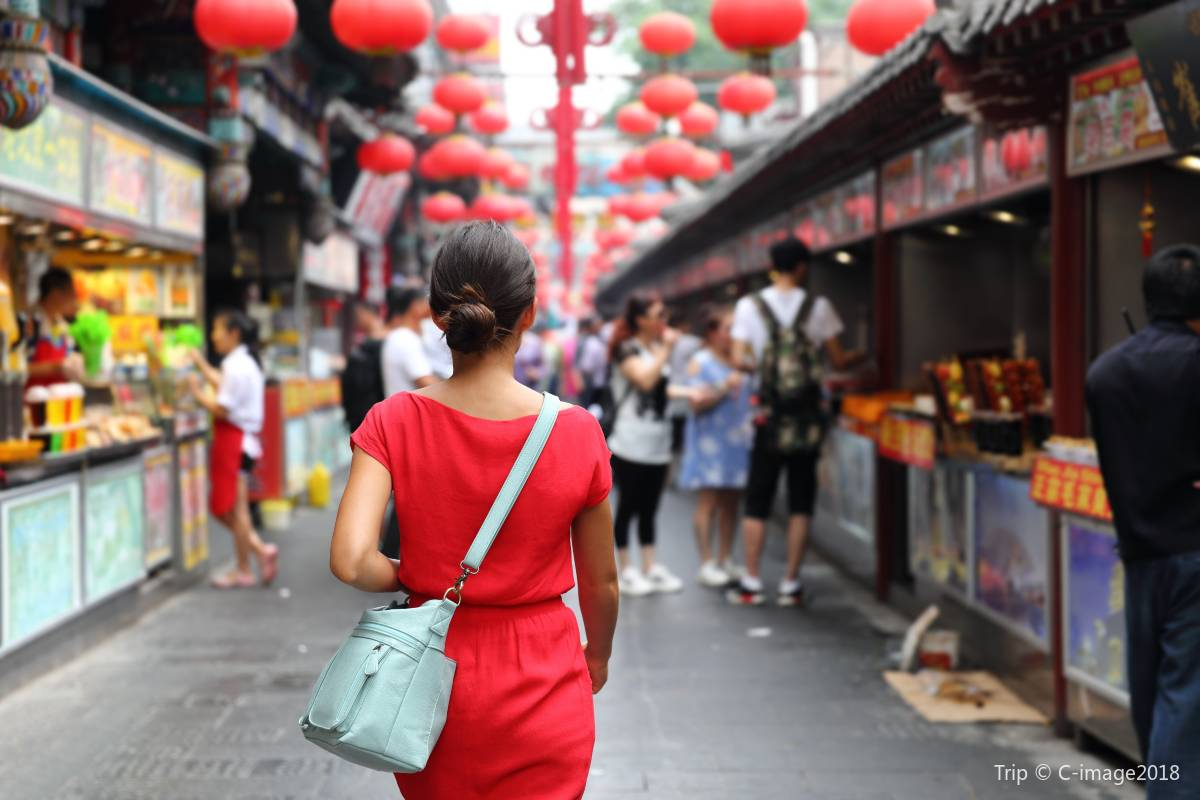
Beijing is a captivating city to explore on foot, with a mix of ancient history and modern development. The city is generally walkable, especially in areas like the Forbidden City, Wangfujing, and the Hutongs, where many attractions are close together. These districts offer a blend of historical sites, shopping streets, and traditional neighborhoods, perfect for leisurely walks.
🛣️ Sidewalks, Crossings & Navigation:
Sidewalks in Beijing are mostly well-kept, but they can get crowded, especially during peak times. Pedestrian crossings are usually respected, but it's important to stay alert as traffic can be busy. Some areas might have accessibility challenges, such as uneven paths, so comfortable walking shoes are recommended.
🗺️ Maps, Signage & Safety:
Baidu Maps is reliable in Beijing, and signs are often in both English and Chinese, particularly in tourist areas. The city is generally safe for walking, even at night, but it's best to stay in well-lit areas. Compared to other cities, Beijing might feel more traditional, offering a unique charm worth experiencing.
🌦️ Weather Considerations:
Beijing's weather can affect walkability, with hot summers and cold winters. Spring and autumn are ideal for walking, with mild temperatures perfect for exploring. Check the weather forecast before heading out for a more comfortable experience.
📸 Scenic Walks or Hidden Gems:
For a scenic walk, visit the Forbidden City for a glimpse into China's imperial past. Another gem is the Hutongs, where narrow alleys are filled with traditional courtyard homes and local shops. These areas offer great photo opportunities and a chance to experience Beijing's rich culture.
✅ Who It’s Great For:
Exploring Beijing on foot is perfect for history buffs, solo travelers, and photographers. Those staying in central areas will find it easy to access key attractions without needing much transport.
⚠️ What to Watch Out For:
- Be cautious of busy roads with narrow sidewalks, especially during rush hours.
- Construction or unexpected closures can happen, so it's good to have a flexible plan.
- Some areas may lack shade, so sun protection is advisable during sunny days.
Top Things To do In Beijing
Advantages of China's High-Speed Rail System

China's high-speed rail system is remarkable for its speed, modern design, and high reliability. Trains can reach speeds of up to 350 km/h, allowing long-distance travel to be completed in just a few hours, significantly reducing travel time.
The trains are clean and comfortable, offering a range of seating options from economy to business class. Booking tickets online is straightforward (Trip.com is a popular choice among travelers), and major stations typically have English signage to assist with navigation. For most journeys, taking the high-speed train is often faster and more convenient than flying.
🎯 Choosing the Right Transportation in Beijing
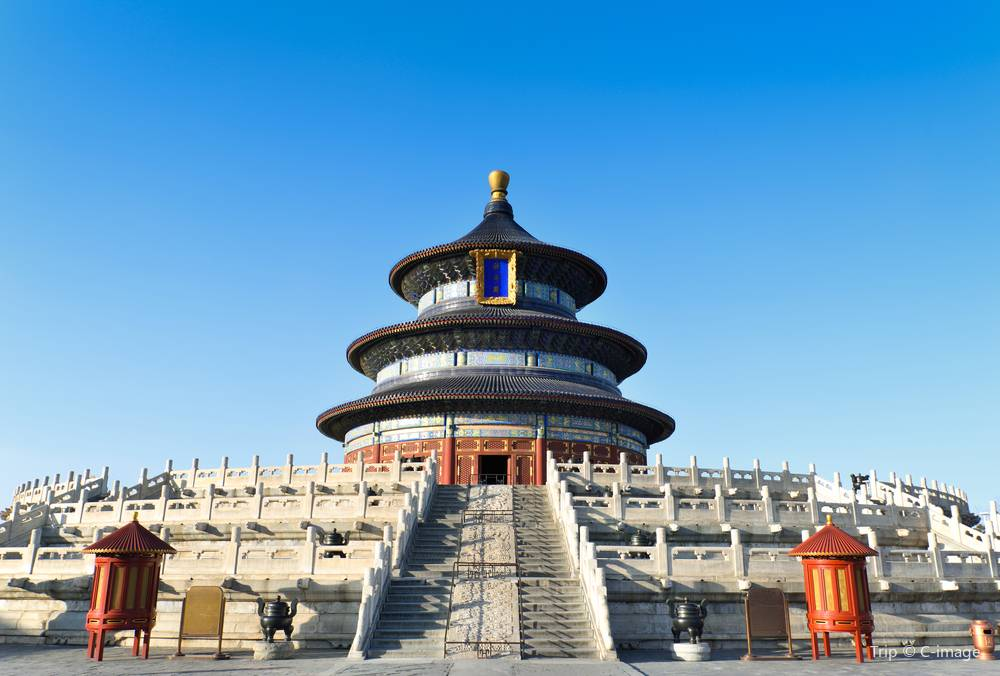
Exploring Beijing is an adventure in itself, whether you're navigating the subway, grabbing a taxi after sightseeing, or taking a leisurely walk around the hutong lakes. The city has its own unique rhythm—bustling and historic, yet surprisingly easy to manage once you get the hang of it.
Persona - Recommended Transport Options:
- First-time visitors: Subway + Taxi or Didi
- Families: Subway + Private Transfers or Taxis
- Budget travelers: Subway + Buses + Walking
- Solo explorers: Subway + Walking + Shared E-Bikes
- Late-night arrivals: Didi from the airport or airport shuttle buses
Feel free to mix and match your transportation methods—use the subway for quick trips across the city, taxis or Didi for added convenience, and consider biking or walking to truly experience the local atmosphere. Having mobile data is incredibly helpful, so make sure to explore the best eSIM options for China.
FAQs about Beijing Public Transport
What are the main modes of public transport in Beijing? 🚇🚌🚖
Beijing offers a variety of public transport options including the subway, buses, taxis, and shared bikes.How do I pay for public transport in Beijing? 💳📱
You can use a Beijing Transportation Smart Card (Yikatong) for subway and bus rides, or pay via mobile apps like WeChat Pay or Alipay. Single-journey tickets are also available at subway stations.Is the Beijing subway easy to navigate for non-Chinese speakers? 🌐🗺️
Yes, the Beijing subway is quite user-friendly for non-Chinese speakers. Signs and announcements are available in both Chinese and English.What is the best way to get from Beijing Capital International Airport to the city center? ✈️➡️🏙️
You can take the Airport Express train, a taxi, or use ride-hailing services like Didi. Airport shuttle buses are also available.Are there any transportation options for late-night travel in Beijing? 🌙🚖
For late-night travel, taxis and Didi are reliable options. Some night buses also operate on major routes.Can I rent a bike in Beijing? 🚴♂️
Yes, shared bikes are widely available throughout the city. You can rent them using mobile apps like Mobike or Ofo.How crowded is Beijing public transport during peak hours? ⏰👥
Public transport can be very crowded during peak hours, typically from 7:00-9:00 AM and 5:00-7:00 PM on weekdays.


 NO.1
NO.1